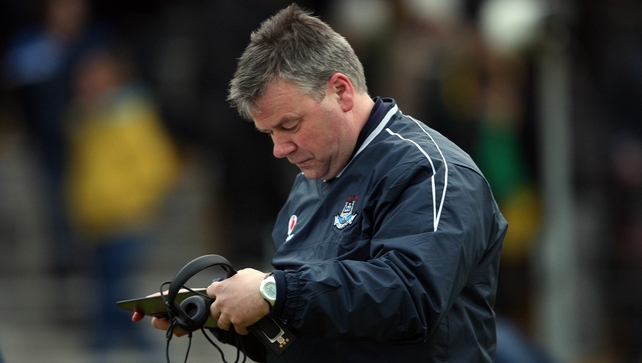By Brendan Cole
Assessing the opposition, cultivating a style of play and making changes during the match are not new to Gaelic football, but the nature of the information and the use of rich statistical data during play have had a revolutionary impact on the game in recent years.
As every serious follower of football knows, statistics are a weapon which no modern team can afford to be without and have played a role in driving the various shifts in style that have taken place since Kerry’s defeat to Armagh in the 2002 All-Ireland final.
That result signalled the start of a revolutionary period that saw unprecedented upheaval both on the field and off it though in the end, Tyrone and not Armagh reaped the major rewards, winning three titles in seven years.
"In the past it would have been okay to go down with just the data. Now you would be expected to say why and suggest a fix for the situation."
Dublin, Mayo and Donegal have taken up the mantle and driven the most recent period of breakneck-paced development in the game, while Kerry have also adapted to developments in their own way.
But how exactly is statistical analysis used and what does it contribute to the sideline battle between managers during matches?
Ray Boyne was head of statistical analysis for the Dublin senior team until last year and is still involved with various teams in the county and is uniquely positioned to provide insight into how the role has developed.
He has been involved since the earliest days, when he was spotted using a clipboard on the sideline at St Vincent's.
Getting people interested was not difficult in, but establishing the analyst as a central part of the backroom team took longer.
“Armagh had won an All-Ireland with a guy doing stats. In the GAA, as you know, if somebody’s doing strength and conditioning or getting up at 5.30am to do training sessions that becomes a blueprint for success.
“It wasn’t difficult to convince people to get in the door, but it was actually very, very difficult to convince people that you had an input that could help.”
As might be expected, before every match, an in-depth brief on the opposition and a suggested approach to countering their strategy in key areas will also be presented to players and coaches.
Boyne expanded on the approach, saying: "What makes the strategy successful for them? Who are the key players in that? And you would hope to target them and nullify their strategy and impose your strategy on them. You are hoping during the game as you’re doing that, that a picture is developing.”

But it goes further than that. For example, every player will get a breakdown of every player’s performance in their county jersey in the form of a sophisticated report on every action involving them on the pitch, accompanied by video clips of each action.
Aside from a continuing trend towards more detail, the major change in recent years has been the emergence of in-game analysis as a major influence on the outcome of matches.
The value of statistical information is just as likely to make itself felt in the form of constant in-game adjustments.
“If it comes to something as big as that, then there is something more fundamental with your analysis that is wrong. In-game analysis has changed. In the past it would have been okay to go down with just the data. Now you would be expected to say why and suggest a fix for the situation."
